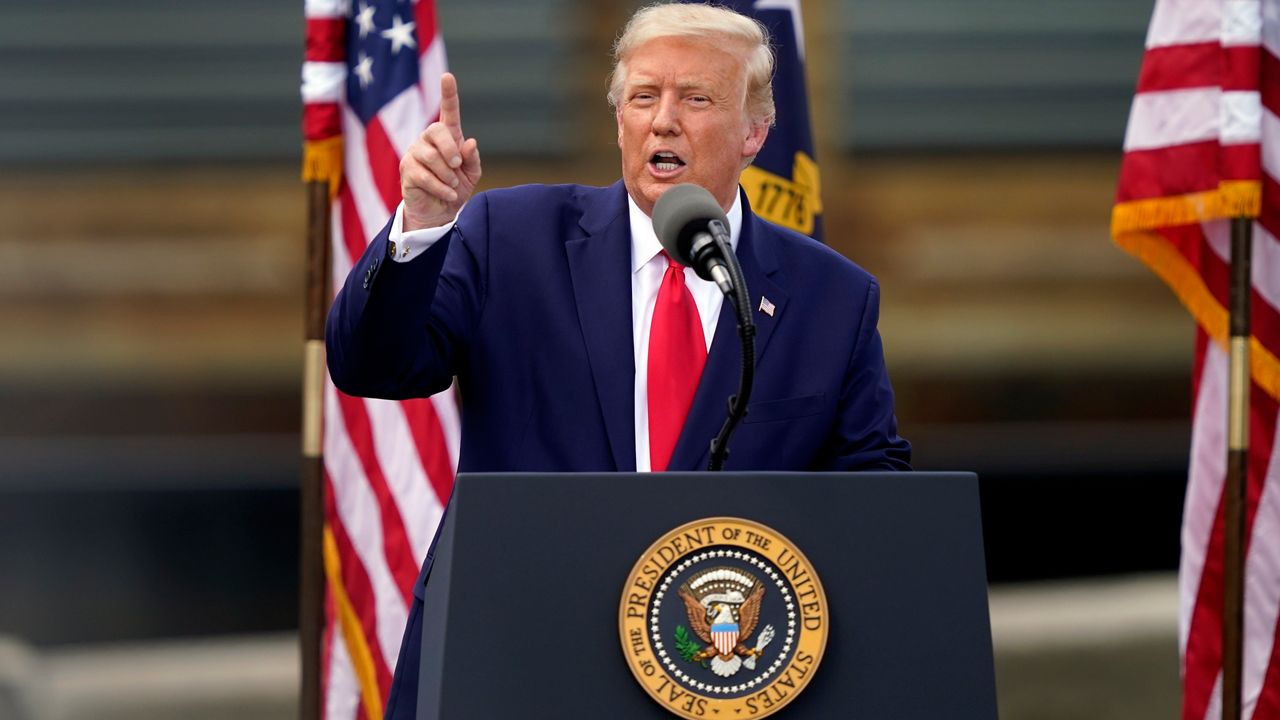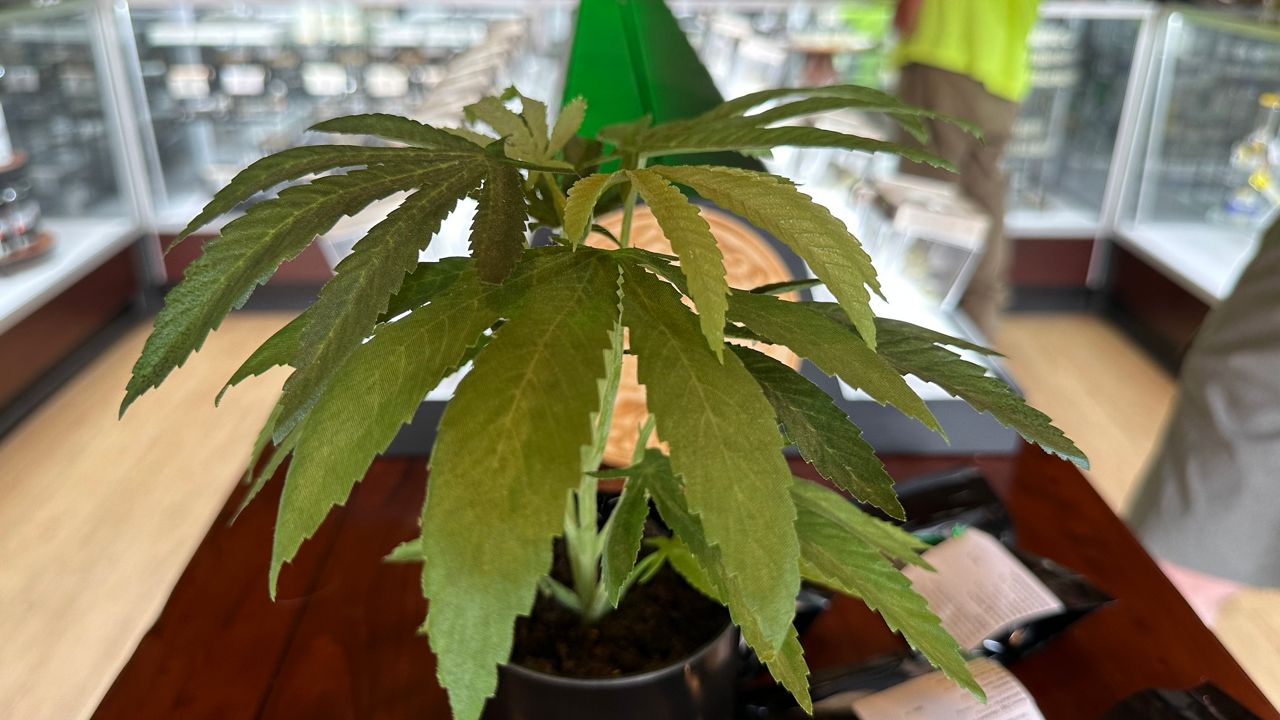TEXAS — Despite national and statewide polls showing President Donald Trump trailing against Joe Biden, the president is reassuring his supporters not to fear, he has a secret weapon: A huge “silent majority” who will turn out on November 3 to bring Trump a landslide re-election and prove the “fake” polls wrong, he has said.
So, who are these silent Trump supporters he’s promising will come out in droves on November 3, and do they really exist?
Republican party leaders and strategists have said there are plenty of Trump voters out there, they just aren’t speaking up publicly about their support for the president at a time when the political discourse in America is so divisive.
“I think it’s as true as saying the sky is blue,” said George Seay, a political strategist who has worked on several high-profile Texas GOP campaigns, including Sen. Mark Rubio and Gov. Greg Abbott.
“I wouldn’t call it the silent majority per se, but there are a significant number of people who either don’t respond to polls or they won’t reveal that they will vote for Trump because they fear what other people are going to think,” Seay said.
In an atmosphere of the so-called “cancel culture” and political correctness, many Trump supporters may even lie about their support when responding to pollsters, Seay said.
Biden is ahead of Trump by between five and 11 percentage points across several national polls, according to FiveThirtyEight, a website owned by ABC that closely tracks national opinion polls.
Trump and Republican leaders respond to polls showing Biden leading by pointing to the pre-election polls from 2016, which predicted Hillary Clinton would beat Trump with 90 percent probability. Clinton did win the popular vote, which the polls predicted, but lost as Trump picked up the most Electoral College votes.
National polls in 2016 predicted that Clinton would win the Electoral College votes with slim margins. They got that wrong.
But are the silent Trump supporters enough to prove the pre-polls wrong in November?
It may be too early to tell, given that in 2016, many voters in swing states such as Wisconsin, Pennsylvania, and Florida decided on their vote just days before the election, partly contributing to the pre-election poll discrepancies in 2016, according to post-election analysis by the American Association for Public Opinion Research, or AAPOR.
Republican statements that Trump supporters are too afraid to go public, “sounds like adventures in strategic storytelling,” said Kevin Banda, an assistant professor of political science at Texas Tech Univesity.
“There’s no evidence that survey responders are likely to lie about who they support,” Banda said.
The term “silent majority” was originally used by Richard Nixon, who was elected in 1969 on a platform that emphasized “law and order” during a time of civil unrest in the U.S. over the Vietnam War and civil rights. By calling on the “silent majority” to support him, Nixon tried to appeal to those voters who had not participated in anti-war demonstrations across the country.
Trump’s campaign 2020 messages have been compared to Nixon’s strategy. The president has pointed to the protests and demonstrations against police killings of Blacks and racial inequality around the country as the result of the “lawlessness” of "Democrat-run" cities and states.
“The idea that Donald Trump supporters are subject to mistreatment by a liberal, socialist culture is part of the actual campaign strategy,” said James Henson, then head of the Texas Political Project at the University of Texas at Austin.
The campaign’s messaging is that Trump, despite being the incumbent, is an outsider running against an elite machine working against his beleaguered supporters, he said.
There may be anecdotal evidence of Trump supporters being afraid to put a campaign sign in their yard or a bumper sticker on their car, he said. But the same can be said for the other side, depending on the social context of where you live, Henson said.
“There is very little indication in the data that we are seeing people being reluctant to tell the truth to pollsters out of fear of retaliation,” he said.
Texas is the fastest-growing state by population and, because of that, its demographics are changing. For Democrats, that has meant picking up more voters and turning the state from bright red to purple, particularly in the urban and inner suburban areas.
“The level of alarm within the Republican Party is at a point that I’ve never seen before,” Seay said.
The GOP got “pretty happy and lazy and arrogant over the last 10 to 15 years” after winning up and down the ballot and controlling the Legislature, he said.
But in 2018, the Democrats flipped 12 seats in the state House, narrowing the gap between the minority and majority in Austin to its closest in 10 years.
Beto O’Rourke lost in a surprisingly tight fight to unseat Republican Sen. Ted Cruz. The closeness of that race was eye-opening for both Democrats and Republicans, who saw potential deep vulnerabilities in the assumption that Texas was solidly red.
The Democratic movements in the suburbs have been overstated overall, but there is no doubt that Trump has lost some Republican voters.
Texas leans conservative and ethics is a big part of that, he said. Even 30 years ago when Democrats ran the state, they were conservative, Seay pointed out.
Trump is now facing a pandemic, a declining economy and civil unrest over racial inequality. Top that with his mannerisms and statements on social media, and it’s no wonder many are afraid to admit if they will vote for him even if they don’t like him, Seay said.
“The way he conducts himself is right out of back ally, New York City real estate dealings,” Seay said. “That is a cultural mismatch that turns Texans off.”
Seay said he believes Texas politics is ephemeral and will revert back to being a solidly Republican state after this election cycle.
Texas is and will not become a battleground state in presidential politics, Roy Bailey, the national co-chairman of the Trump Victory campaign said last month on Lone Star Politics, a weekly, Texas-focused political talk show.
“Anyone who believes in this stuff is just full of malarkey,” Bailey said when asked if Texas could become a swing state.
Perhaps. But “one would be hard-pressed not to look at the money flowing in and not conclude that Texas is going to be more competitive than it was four years ago,” Henson said, referring to the record amount of money the national Democratic Party is bringing into Texas this year.








